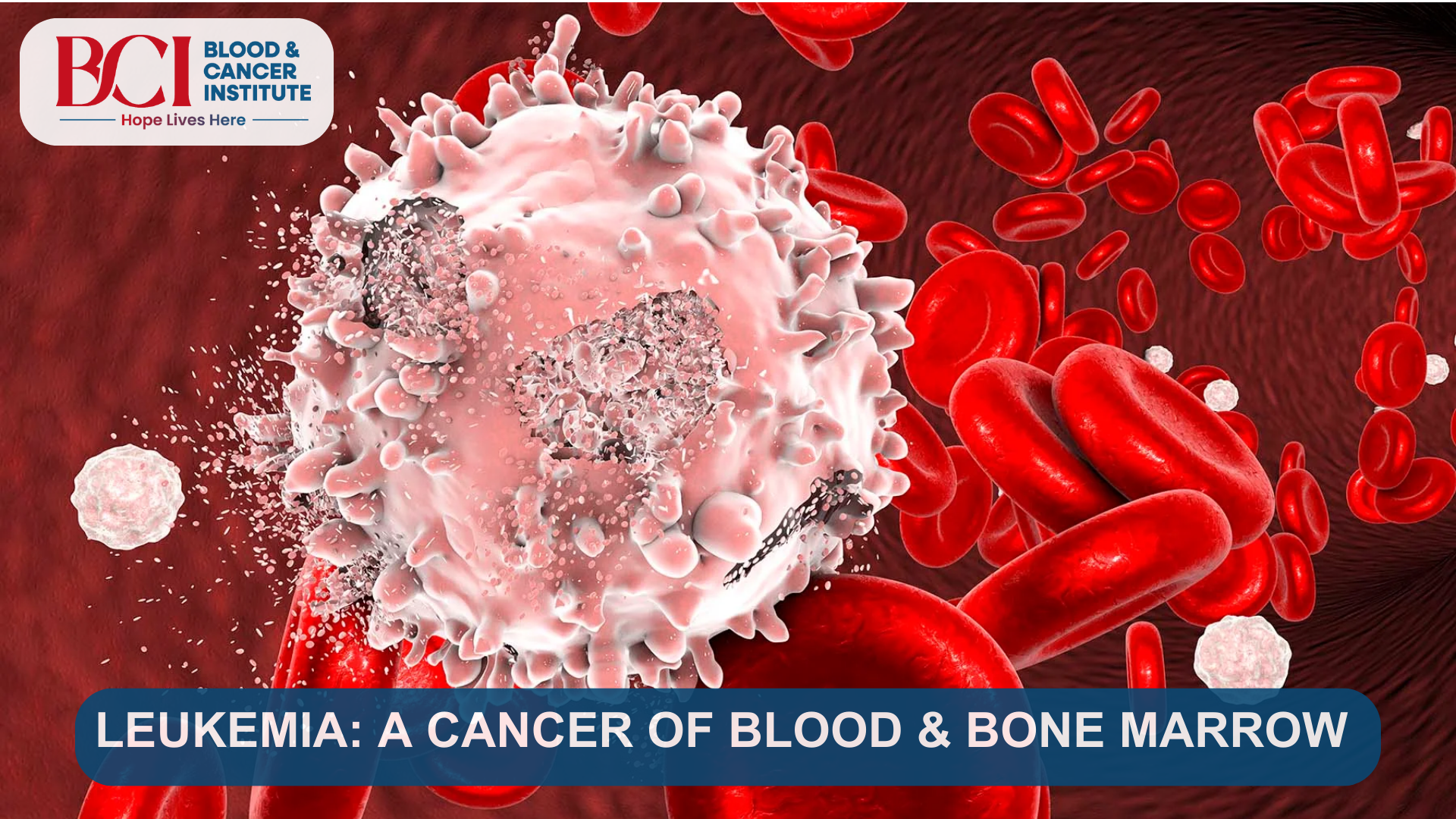
- By : BCI
- Blog
- Comments: 0
Leukemia: A Cancer of Blood & Bone Marrow Understanding it from the Expert Blood Cancer Specialist in Surat
Leukemia is a cancer of the blood cells. It is the most common type of cancer in children and young adults. Leukemia can also occur in adults, but it is less common.
Leukemia starts in the bone marrow, which is the soft tissue inside the bones. The bone marrow is where new blood cells are made. Leukemia cells are abnormal blood cells that crowd out the healthy blood cells in the bone marrow. This can lead to a shortage of red blood cells, white blood cells, and platelets. Lets understand this disease from one of the best blood cancer specialists in Surat at BCI- Blood and Cancer Institute, Surat.
Causes of Leukemia
The exact cause of leukemia is unknown. However, there are some risk factors that can increase your chance of developing leukemia. These risk factors include:
● Age: Leukemia is more common in children and young adults.
● Family history: If you have a family history of leukemia, you are at an increased risk of developing it yourself.
● Exposure to certain chemicals: Exposure to certain chemicals, such as benzene, can increase your risk of developing leukemia.
● Certain genetic disorders: Some genetic disorders, such as Down syndrome, can increase your risk of developing leukemia.
Symptoms of Leukemia
The symptoms of leukemia can vary depending on the type of leukemia and how advanced it is. However, some common symptoms of leukemia include:
● Fatigue
● Shortness of breath
● Pale skin
● Easy bleeding or bruising
● Fever
● Night sweats
● Weight loss
● Swollen lymph nodes
If you experience any of these symptoms, it is important to see a blood cancer specialist in Surat right away.
Types of Leukemia
There are many types of Leukemia but these are the four major types:
● Acute lymphoblastic leukemia (ALL): ALL is the most common type of leukemia in children. It is also a common type of leukemia in young adults.
● Acute myeloid leukemia (AML): AML is the most common type of leukemia in adults. However, it can also occur in children.
● Chronic lymphocytic leukemia (CLL): CLL is the most common type of leukemia in adults. It is a slow-growing cancer that often does not cause symptoms for many years.
● Chronic myeloid leukemia (CML): CML is a slow-growing cancer that often does not cause symptoms for many years. It is more common in adults than in children.
Diagnosis of Leukemia
To diagnose leukemia, your doctor will ask you about your medical history and symptoms. They will also perform a physical exam and order some tests. These tests may include:
● Blood tests: Blood tests can be used to count the number of different types of blood cells in your blood. They can also be used to look for abnormal blood cells.
● Bone marrow biopsy: A bone marrow biopsy is a procedure in which a small sample of bone marrow is removed and examined under a microscope. This can be used to look for cancer cells in the bone marrow.
Treatment of Leukemia
The treatment for leukemia depends on the type of leukemia, how advanced it is, and your overall health. Some common treatments for leukemia include:
● Chemotherapy: Chemotherapy is the use of drugs to kill cancer cells.
● Radiation therapy: Radiation therapy uses high-energy beams of radiation to kill cancer cells.
● Stem cell transplant: A stem cell transplant is a procedure in which healthy stem cells are transplanted into your body to replace the damaged or diseased stem cells.
Prognosis for Leukemia
The prognosis for leukemia depends on the type of leukemia, how advanced it is, and your overall health. However, with advances in treatment, the prognosis for leukemia has improved significantly in recent years.
BCI — Blood and Cancer Institute, Surat is the best cancer hospital in Surat, with a team of experienced hemato-oncologists who provide comprehensive leukemia treatment services. We offer a variety of diagnostic tests and treatments for leukemia, including chemotherapy, radiation therapy, and stem cell transplantation.
If you are concerned about your risk of leukemia, or if you have been diagnosed with leukemia, talk to our expert cancer specialist in Surat. They can help you to understand your risk factors, develop a treatment plan, and provide you with support.
Additional information about leukemia
● Leukemia can be cured. With advances in treatment, the cure rate for leukemia has improved significantly in recent years.
● Leukemia is a complex disease. There are many different types of leukemia, and each type has its own unique characteristics.
● Leukemia can be treated at any age.
